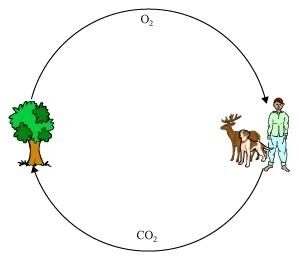Sponsor Area
Forests: Our Lifeline
Explain how animals dwelling in the forest help it grow and regenerate.
The animals in forests are of various types. These could be herbivores, carnivores, micro-organisms, etc. These play an important role in maintaining the food chains.
(i) Micro-organisms convert the dead plants and animals to humus. This humus helps in returning the nutrients back to the soil. These are absorbed by plants.
(ii) The animals also help in dispersing the seeds of certain plants.
(iii) The decaying animal dung provides nutrients to various types of seedlings to grow.
All these activities of animals dwelling in the forest help it to grow and regenerate.
Explain how forests prevent floods.
Forest acts as a natural absorber of water. It allows rain water to seep through. In the absence of trees, the rain water would hit the ground directly resulting in flood. However, because of the presence of trees, rain water does not hit the ground directly. It rather hits the ground slowly. Hence, before flooding, all the rain water seeps through ground. In this way, forests prevent floods.
What are decomposers? Name any two of them. What do they do in the forest?
Decomposers are micro-organisms that convert the dead plants and animals to humus.
Bacteria and fungi are the two types of decomposers.
They help in the process of recycling of nutrients by decomposing various dead organisms such as plants and animals to form humus.
Explain the role of forest in maintaining the balance between oxygen and carbon dioxide in the atmosphere.
Forests are called the green lungs. This is because plants in forests release oxygen through the process of photosynthesis and help in providing oxygen to animals for respiration. Plants consume carbon dioxide released by the animals. In this way, plants help in maintaining a balance of oxygen and carbon dioxide in atmosphere.

Sponsor Area
Mock Test Series
Mock Test Series





